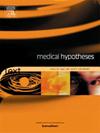Partial heart transplantation can provide a pulsatile and growing Fontan conduit: A rightward shift for a better Fontan
IF 2.1
4区 医学
Q3 MEDICINE, RESEARCH & EXPERIMENTAL
引用次数: 0
Abstract
The total cavopulmonary connection, more commonly known as the Fontan-Kreutzer procedure, is the final surgical step in the palliation of single ventricle congenital heart defects. The overwhelming success of the Fontan procedure has resulted in a worldwide population of 50,000 to 70,000 patients with a Fontan procedure. However, the resultant Fontan physiology, characterized by parallel systemic and pulmonary circuits, inevitably results in fatal long-term complications as a result of passive, nonpulsatile pulmonary blood flow, inefficient hemodynamics, and static conduit size which are inherent to the Fontan. Partial heart transplantation has dramatically altered the landscape of congenital heart surgery by providing a source of semilunar valve implants with the potential for growth and self-repair. Here we hypothesize that partial heart transplantation of the right atrium can provide a novel Fontan conduit which is pulsatile, has growth potential, low thrombogenicity, and optimal flow dynamics.
部分心脏移植可以提供搏动和生长的Fontan导管:向右移动可以获得更好的Fontan
全腔室肺连接,通常被称为Fontan-Kreutzer手术,是缓解单心室先天性心脏缺陷的最后一步手术。Fontan手术的巨大成功导致全世界有5万到7万名患者接受了Fontan手术。然而,由此产生的Fontan生理,以平行的系统和肺回路为特征,不可避免地导致致命的长期并发症,这是由于被动的、无搏动的肺血流、低效的血流动力学和Fontan固有的静态导管大小所导致的。部分心脏移植通过提供具有生长和自我修复潜力的半月瓣植入物,极大地改变了先天性心脏手术的前景。在这里,我们假设右心房部分心脏移植可以提供一种搏动的、具有生长潜力、低血栓形成性和最佳血流动力学的新型Fontan导管。
本文章由计算机程序翻译,如有差异,请以英文原文为准。
求助全文
约1分钟内获得全文
求助全文
来源期刊

Medical hypotheses
医学-医学:研究与实验
CiteScore
10.60
自引率
2.10%
发文量
167
审稿时长
60 days
期刊介绍:
Medical Hypotheses is a forum for ideas in medicine and related biomedical sciences. It will publish interesting and important theoretical papers that foster the diversity and debate upon which the scientific process thrives. The Aims and Scope of Medical Hypotheses are no different now from what was proposed by the founder of the journal, the late Dr David Horrobin. In his introduction to the first issue of the Journal, he asks ''what sorts of papers will be published in Medical Hypotheses? and goes on to answer ''Medical Hypotheses will publish papers which describe theories, ideas which have a great deal of observational support and some hypotheses where experimental support is yet fragmentary''. (Horrobin DF, 1975 Ideas in Biomedical Science: Reasons for the foundation of Medical Hypotheses. Medical Hypotheses Volume 1, Issue 1, January-February 1975, Pages 1-2.). Medical Hypotheses was therefore launched, and still exists today, to give novel, radical new ideas and speculations in medicine open-minded consideration, opening the field to radical hypotheses which would be rejected by most conventional journals. Papers in Medical Hypotheses take a standard scientific form in terms of style, structure and referencing. The journal therefore constitutes a bridge between cutting-edge theory and the mainstream of medical and scientific communication, which ideas must eventually enter if they are to be critiqued and tested against observations.
 求助内容:
求助内容: 应助结果提醒方式:
应助结果提醒方式:


